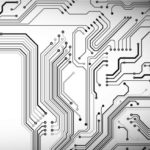The keys to understanding the latest craze in languages: Python
In the world of programmers there is a new much talked-about language: Python. This is a type of programming language (a set of symbols and syntactic and semantic rules needed to develop programs that control a machine's physical and logical behavior) that aims for simplicity, versatility and swift development, whose name is inspired by the group of English comics “Monty Python”.

Its expansion and popularity are relatively recent, since it was created at the end of the 1980s by Guido Van Rossum at the Center for Mathematics and Computer Science of the Netherlands, as a successor to another programming language, ABC. However, it was not published until 1991. Today it is managed by the Python Software Foundation.
Why Python?
In recent years, Python has become very popular for several reasons:
- It contains a large amount of libraries (types of data and functions built into the language itself) that help developers carry out tasks without having to program from scratch.
- It makes it possible to create programs quickly and simply and with fewer lines of code than with other languages.
- You can develop with Python on various platforms such as Unix, GNU/Linux, macOs, Windows…
- It is free, even for business purposes.
What are its main features?
Multi-paradigm
Python is a multi-paradigm programming language, i.e. it does not require that programmers adopt a particular programming language, but rather enables them to use several styles.
Multi-platform
There are Python versions available on many different operating languages. It was originally developed for Unix, although any system is compatible with the language as long as there is an interpreter programmed for it.
Interpreted
An interpreted or script language is one that is run using an intermediate program called ‘interpreter’. In other words, the source code is translated into an intermediate pseudo machine code called bytecode the first time it is run by generating .pyc or .pyo files, which will be run on successive occasions. Interpreted languages are more flexible and portable than compiled ones, which have a faster execution.
Interactive
Python has a command-line interpreter where sentences can be entered. Each sentence is run and produces a visible result that can help us better understand the language and quickly test the results of the execution of portions of code.
Functions and libraries
It has many functions built into the language itself, for processing text strings, numbers, files, etc. There are also many libraries we can import into the programs to address specific issues such as window programming or networked systems, or things as interesting as creating compressed .zip files.
Clear and legible syntax
Python has a highly visual syntax, thanks to indented notation (with text indentation using tabulation or spaces), which is mandatory. In many languages, elements such as brackets or the keywords 'begin' and 'end' are used to separate portions of code. To separate portions of code in Python we have to tabulate inward, placing a margin for the code that would go within a function or loop. This helps all programmers to adopt the same notations, while the programs developed by any programmer have a very similar look.
Python is an interesting reality in constant evolution and development, and has the support of a rapidly growing community. Companies like Yahoo, Google, Walt Disney, NASA or Red Hat already use Python in their developments.